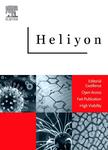版权所有:内蒙古大学图书馆 技术提供:维普资讯• 智图
内蒙古自治区呼和浩特市赛罕区大学西街235号 邮编: 010021

作者机构:Department of Information Technology The University of Haripur Khyber Pakhtunkhwa Haripur 22620 Pakistan Department of Computer Science College of Computer and Information Sciences King Saud University Riyadh 11633 Saudi Arabia College of Information Technology United Arab Emirates University Al Ain 15551 United Arab Emirates SFI-Funded E-Governance Unit Insight Centre for Data Analytics University of Galway Galway H91 CF50 Ireland Department of Natural and Engineering Sciences College of Applied Studies and Community Services King Saud University Riyadh 11633 Saudi Arabia
出 版 物:《Heliyon》 (Heliyon)
年 卷 期:2025年第11卷第1期
页 面:e40874页
基 金:Analytics for Sustainable Policy towards Environmental and Climate Transition Unit Insight Centre for Data Analytics University of Galway King Saud University, KSU, (RSP2024R498) King Saud University, KSU
主 题:Anamoly detection Cyber security Deep learning Federated learning Graph neural network Internet of things Mobile computing
摘 要:The rapid growth of Internet of Things (IoT) devices presents significant cybersecurity challenges due to their diverse and resource-constrained nature. Existing security solutions often fall short in addressing the dynamic and distributed environments of IoT systems. This study aims to propose a novel deep learning framework, SecEdge, designed to enhance real-time cybersecurity in mobile IoT environments. The SecEdge framework integrates transformer-based models for efficient handling of long-range dependencies and Graph Neural Networks (GNNs) for modeling relational data, coupled with federated learning to ensure data privacy and reduce latency. The adaptive learning mechanism continuously updates model parameters to counter evolving cyber threats. The framework s performance was evaluated in a simulation environment using the NSL-KDD, UNSW-NB15, and CICIDS2017 datasets. Results demonstrated that SecEdge outperformed state-of-the-art methods with a detection rate of 98.8% for DoS attacks on NSL-KDD, 98.5% for MitM attacks on UNSW-NB15, and 98.7% for data injection attacks on CICIDS2017. © 2024